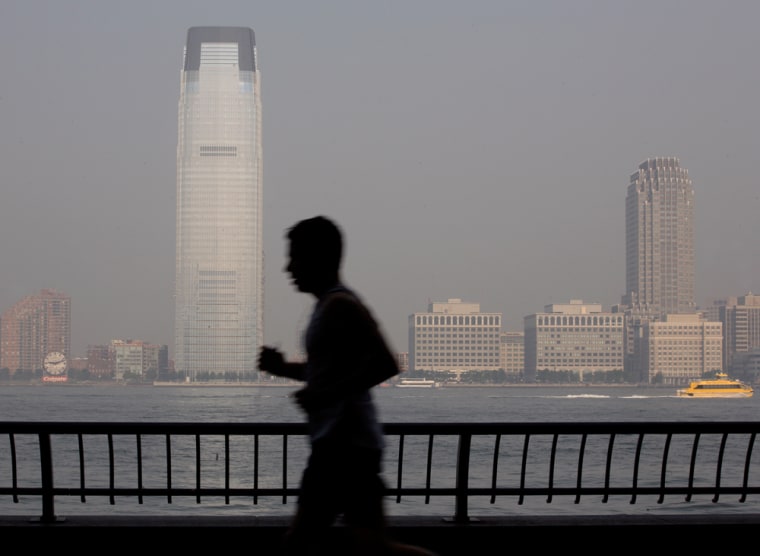There was plenty of complaining about the weather on Tuesday. But it’s not hot enough to suit Shai Shavit.
“When you have hot days, the cars overheat,” said Shavit, 41, owner of Tri State Towing, who has been carting away people’s cars in the city for 20 years.
A high of around 93 was predicted for Tuesday in New York — but combined with humidity it was expected to feel like 98 degrees. On Monday, the temperature hit 92 in Central Park. Cooler weather and storms were forecast by Wednesday.
Monday’s heat spread as far south as Virginia, where temperatures in the 90s prompted state officials to issue a hazardous weather alert. Richmond city officials opened three cooling shelters.
The West Virginia town of Bluefield offered free lemonade Tuesday after temps surpassed 90 degrees the day before, following a decades-old tradition.
In Washington, D.C., forecasters predicted a high of 96 degrees, which will feel like 101 with the humidity.
At least one school closed Tuesday because of a lack of air conditioning, several neighborhood cooling centers were open and public buses offered free rides in the Northern Virginia suburbs.

Pennsylvania’s state parks and swimming areas reopened Tuesday to those seeking relief from the heat, after a state budget deadlock forced a daylong furlough Monday of more than 24,000 state employees and shut down non-essential services.
New York City officials opened 290 cooling centers at city-run senior centers and community centers, and Mayor Michael Bloomberg urged residents to help prevent blackouts by conserving power and to not exert themselves.
Last year, a heat wave that struck in late July and early August caused 40 deaths directly from heat stroke and contributed to the deaths of another 60 people, city health officials said.
